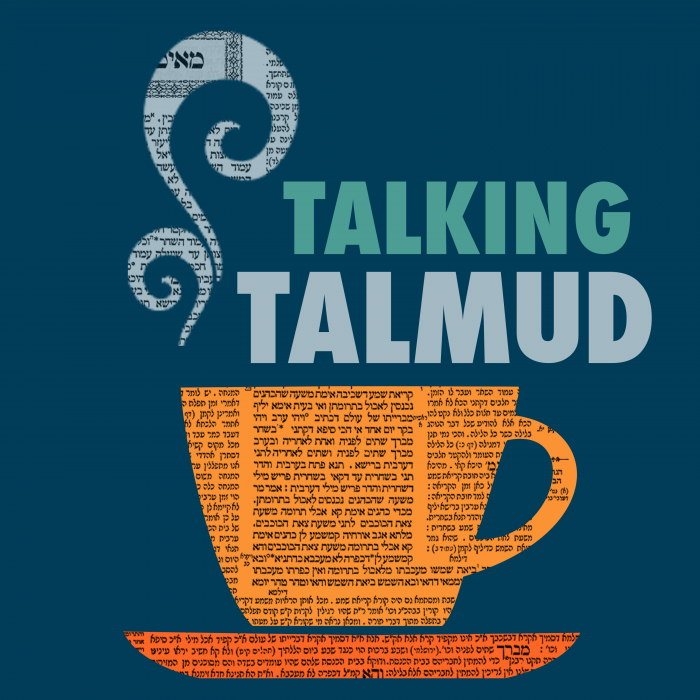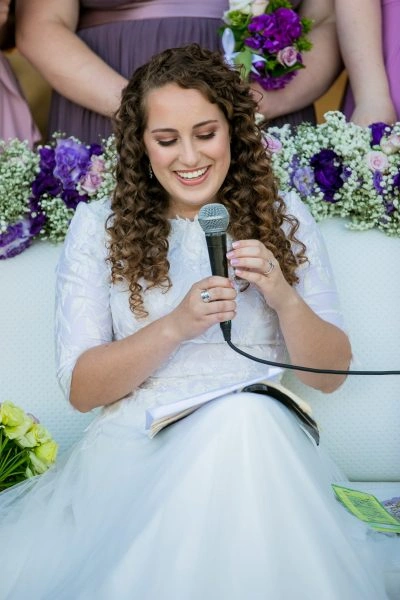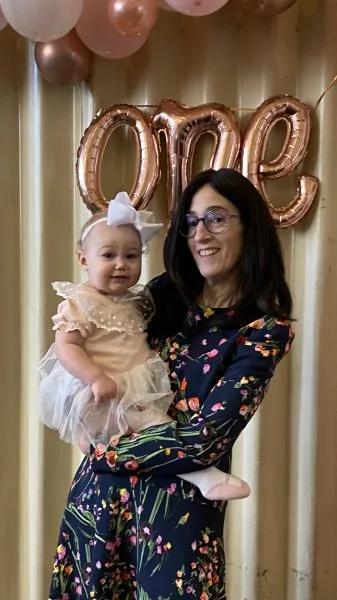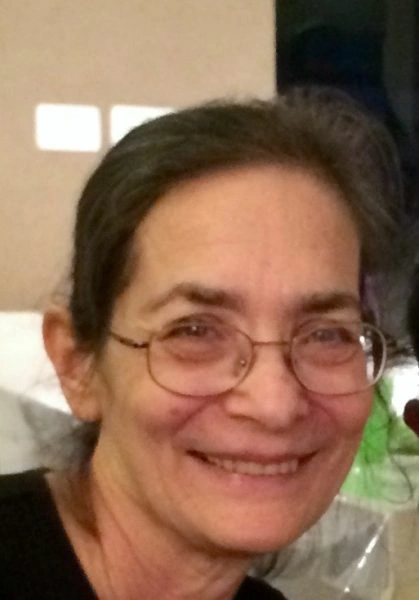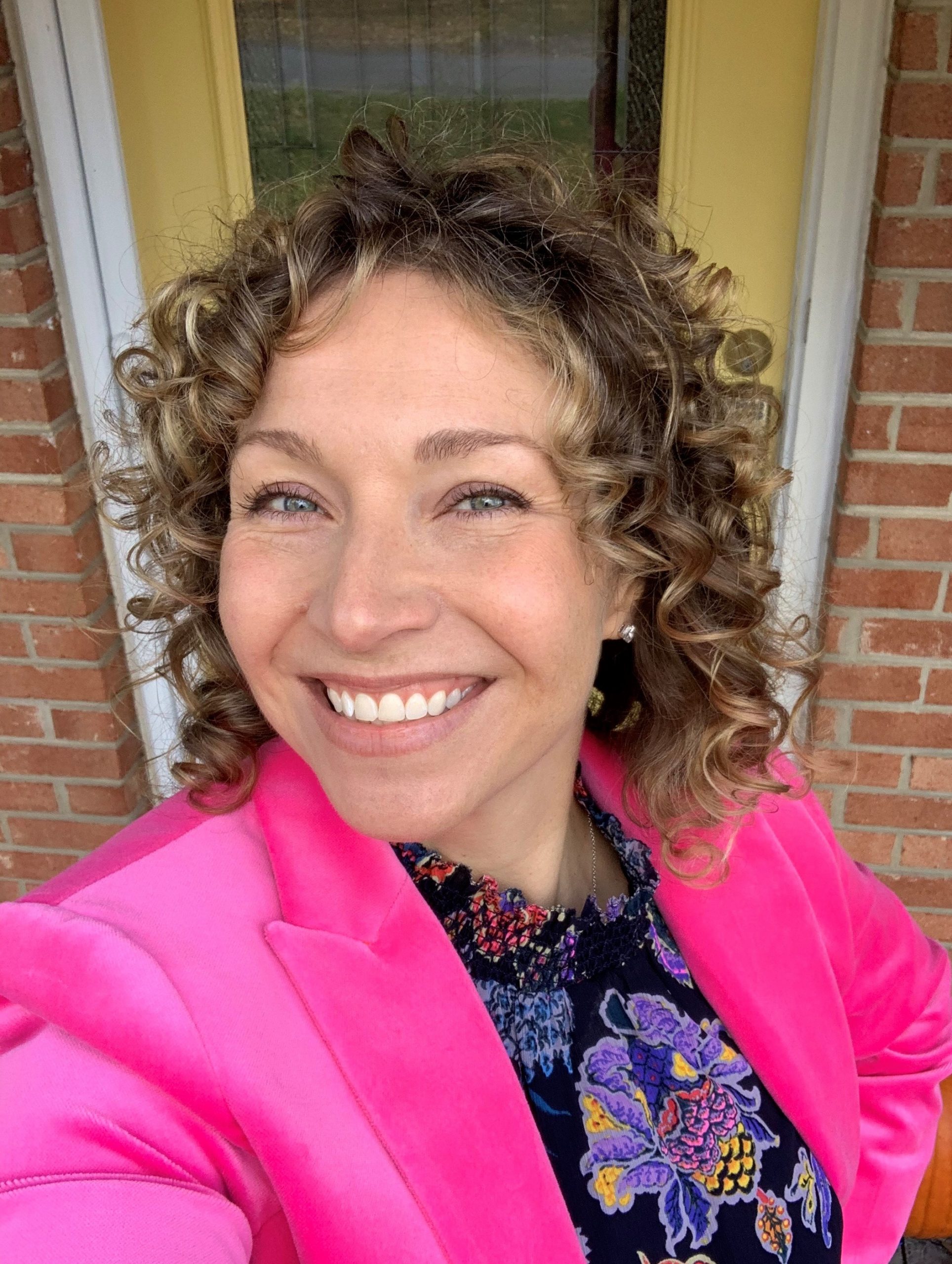What is the order for who receives aliyot to the Torah after the first two (kohen and levi)? Is one allowed to read from a parchment that includes only one book of the Torah? Is one permitted to write sections of the Torah for children to learn? Can the Oral Torah be written down? Other laws are discussed that were instituted because of darkhei shalom, which relate to where to put the food for the eruv and laws of precedence regarding filling up wells from an irrigation channel.
This week’s learning is sponsored by Robert and Paula Cohen in loving memory of Joseph Cohen, Yosef ben Moshe HaCohen, z”l. “He was hard working, loved to sing, esp. as a chazan, and was very dedicated to his family and community.”
Want to dedicate learning? Get started here:


Today’s daily daf tools:
This week’s learning is sponsored by Robert and Paula Cohen in loving memory of Joseph Cohen, Yosef ben Moshe HaCohen, z”l. “He was hard working, loved to sing, esp. as a chazan, and was very dedicated to his family and community.”
Today’s daily daf tools:
Delve Deeper
Broaden your understanding of the topics on this daf with classes and podcasts from top women Talmud scholars.
New to Talmud?
Check out our resources designed to help you navigate a page of Talmud – and study at the pace, level and style that fits you.
The Hadran Women’s Tapestry
Meet the diverse women learning Gemara at Hadran and hear their stories.
Gittin 60
מִי קוֹרְאִין? לָא הֲוָה בִּידֵיהּ. אֲתָא וְשַׁיְילֵיהּ לְרַבִּי יִצְחָק נַפָּחָא, אָמַר לֵיהּ: אַחֲרֵיהֶן קוֹרְאִין תַּלְמִידֵי חֲכָמִים הַמְמוּנִּין פַּרְנָסִים עַל הַצִּבּוּר, וְאַחֲרֵיהֶן תַּלְמִידֵי חֲכָמִים הָרְאוּיִין לְמַנּוֹתָם פַּרְנָסִים עַל הַצִּיבּוּר, וְאַחֲרֵיהֶן בְּנֵי תַּלְמִידֵי חֲכָמִים שֶׁאֲבוֹתֵיהֶן מְמוּנִּים פַּרְנָסִים עַל הַצִּבּוּר, וְאַחֲרֵיהֶן רָאשֵׁי כְנֵסִיּוֹת וְכׇל אָדָם.
who reads from the Torah? An answer was not readily available to him. He came and asked Rabbi Yitzḥak Nappaḥa, who said to him: After them read the Torah scholars who are appointed as leaders [parnasim] of the community. And after them read Torah scholars who are fit to be appointed as leaders of the community, even if in practice they received no such appointment. The Sages said that a Torah scholar who knows how to answer any question asked of him is fit to be appointed as leader of the community. And after them read the sons of Torah scholars whose fathers were appointed as leaders of the community. And after them read the heads of synagogues, and after them any person.
שְׁלַחוּ לֵיהּ בְּנֵי גָלִיל לְרַבִּי חֶלְבּוֹ: מַהוּ לִקְרוֹת בְּחוּמָּשִׁים בְּבֵית הַכְּנֶסֶת בְּצִיבּוּר? לָא הֲוָה בִּידֵיהּ. אֲתָא שַׁיְילֵיהּ לְרַבִּי יִצְחָק נַפָּחָא, לָא הֲוָה בִּידֵיהּ. אֲתָא שְׁאֵיל בֵּי מִדְרְשָׁא, וּפַשְׁטוּהָ מֵהָא דְּאָמַר רַבִּי שְׁמוּאֵל בַּר נַחְמָנִי אָמַר רַבִּי יוֹחָנָן: סֵפֶר תּוֹרָה שֶׁחָסַר יְרִיעָה אַחַת – אֵין קוֹרִין בּוֹ.
The people of the Galilee sent a question to Rabbi Ḥelbo: What is the halakha with regard to reading from ḥumashim, i.e., scrolls containing only one of the five books of the Torah, in the synagogue in public? Is this permitted, or is it necessary to read from a complete Torah scroll? An answer was not readily available to him. He came and asked Rabbi Yitzḥak Nappaḥa, but an answer was not readily available to him either. Rabbi Yitzḥak Nappaḥa came and asked this question in the study hall, and they resolved the difficulty from that which Rabbi Shmuel bar Naḥmani says that Rabbi Yoḥanan says: With regard to a Torah scroll that is missing even one sheet of parchment, one may not read from it in public. This indicates that an incomplete Torah scroll may not be used for a public Torah reading.
וְלָא הִיא, הָתָם מְחַסַּר בְּמִילְּתֵיהּ, הָכָא לָא מְחַסַּר בְּמִילְּתֵיהּ. רַבָּה וְרַב יוֹסֵף דְּאָמְרִי תַּרְוַיְיהוּ: אֵין קוֹרְאִין בְּחוּמָּשִׁין בְּבֵית הַכְּנֶסֶת, מִשּׁוּם כְּבוֹד צִבּוּר.
The Gemara rejects this argument: But that is not so, i.e., this cannot serve as a proof to the matter at hand. There, it is lacking part of the matter it is addressing, as a sheet of parchment is missing, whereas here, it is not lacking part of the matter it is addressing, as it contains a complete book. Rabba and Rav Yosef both say: One does not read from ḥumashim in the synagogue out of respect for the community.
וְרַבָּה וְרַב יוֹסֵף דְּאָמְרִי תַּרְוַיְיהוּ: הַאי סֵפֶר אַפְטָרָתָא – אָסוּר לְמִקְרֵי בֵּיהּ בְּשַׁבָּת. מַאי טַעְמָא? דְּלֹא נִיתַּן לִיכָּתֵב.
And Rabba and Rav Yosef both say: It is prohibited to publicly read the haftara, the portion from the Prophets that is read after the weekly Torah portion, on Shabbat, from a scroll containing only the haftarot. What is the reason for this? It is because this type of scroll may not be written, as the words of the Prophets must also be written as complete books.
מָר בַּר רַב אָשֵׁי אָמַר: לְטַלְטוֹלֵי נָמֵי אָסוּר. מַאי טַעְמָא? דְּהָא לָא חֲזֵי לְמִיקְרֵי בֵּיהּ. וְלָא הִיא, שְׁרֵי לְטַלְטוֹלֵי וּשְׁרֵי לְמִיקְרֵי בֵּיהּ –
Mar bar Rav Ashi said: To handle such a scroll on Shabbat is also prohibited. What is the reason for this? It is because it is not fit to be read. Consequently, it is treated as set-aside [muktze] on Shabbat. The Gemara rejects this argument: But that is not so; rather, it is permitted to handle such a scroll and it is permitted to read from it.
דְּרַבִּי יוֹחָנָן וְרַבִּי שִׁמְעוֹן בֶּן לָקִישׁ מְעַיְּינִי בְּסִפְרָא דְאַגַּדְתָּא בְּשַׁבְּתָא; וְהָא לֹא נִיתַּן לִיכָּתֵב, אֶלָּא כֵּיוָן דְּלָא אֶפְשָׁר, ״עֵת לַעֲשׂוֹת לַה׳ הֵפֵרוּ תּוֹרָתֶךָ״; הָכָא נָמֵי, כֵּיוָן דְּלָא אֶפְשָׁר, ״עֵת לַעֲשׂוֹת לַה׳ הֵפֵרוּ תּוֹרָתֶךָ״.
And a proof for this is that Rabbi Yoḥanan and Rabbi Shimon ben Lakish used to read from a scroll of aggada containing the words of the Sages on Shabbat. But such a scroll may not be written, for in principle, the statements of the Oral Law may not be committed to writing. Rather, since it is not possible to remember the Oral Law without writing it down, it is permitted to violate the halakha, as indicated by the verse: “It is time to act for the Lord; they have nullified your Torah” (Psalms 119:126). Here too, in the case of a haftara scroll, since it is not always possible to write complete books of the Bible, due to the expense, it is permitted to apply the reasoning of “It is time to act for the Lord; they have nullified your Torah.”
בְּעָא מִינֵּיהּ אַבָּיֵי מֵרַבָּה: מַהוּ לִכְתּוֹב מְגִילָּה לְתִינוֹק לְהִתְלַמֵּד בָּהּ? תִּיבְּעֵי לְמַאן דְּאָמַר: תּוֹרָה מְגִילָּה מְגִילָּה נִיתְּנָה; תִּיבְּעֵי לְמַאן דְּאָמַר: תּוֹרָה חֲתוּמָה נִיתְּנָה.
Abaye raised a dilemma before Rabba: What is the halakha with regard to whether it is permitted to write a scroll containing only one portion of the Torah for the purpose of enabling a child to study it? The Gemara notes: Let the dilemma be raised according to the one who says that the Torah was given from the outset scroll by scroll, meaning that Moses would teach the Jewish people one portion of the Torah, and then write it down, and then teach them the next portion of the Torah, and then write that down, and continue in this way until he committed the entire Torah to writing. And let the dilemma also be raised according to the one who says that the Torah was given as a complete book, meaning that the Torah was not written down incrementally, but rather, after teaching the Jewish people the entire Torah, Moses committed it to writing all at once.
תִּיבְּעֵי לְמַאן דְּאָמַר תּוֹרָה מְגִילָּה מְגִילָּה נִיתְּנָה – כֵּיוָן דִּמְגִילָּה מְגִילָּה נִיתְּנָה, כּוֹתְבִין; אוֹ דִילְמָא, כֵּיוָן דְּאִידְּבַק – אִידְּבַק.
The Gemara explains the two sides of the dilemma according to each opinion: Let the dilemma be raised according to the one who says that the Torah was given scroll by scroll. On the one hand it is possible to say that since the Torah was originally given scroll by scroll, today as well one may write the Torah in separate scrolls. Or on the other hand, perhaps one should say that since it was ultimately joined together to form a single scroll, it was joined together and can no longer be written in separate scrolls.
תִּיבְּעֵי לְמַאן דְּאָמַר תּוֹרָה חֲתוּמָה נִיתְּנָה – כֵּיוָן דַּחֲתוּמָה נִיתְּנָה, אֵין כּוֹתְבִין; אוֹ דִילְמָא, כֵּיוָן דְּלָא אֶפְשָׁר – כָּתְבִינַן? אֲמַר לֵיהּ: אֵין כּוֹתְבִין. וּמָה טַעַם? לְפִי שֶׁאֵין כּוֹתְבִין.
And let the dilemma also be raised according to the one who says that the Torah was given as a complete book. On the one hand it is possible to say that since it was given from the outset as a complete book, one may not write it today in separate scrolls. Or on the other hand, perhaps one could say that since it is not always possible to write a complete Torah, one may write it in separate scrolls. Rabba said to him: One may not write the Torah in separate scrolls. And what is the reason? Because one may not write a scroll that is only part of the Torah.
אֵיתִיבֵיהּ: אַף הִיא עָשְׂתָה טַבְלָא שֶׁל זָהָב, שֶׁפָּרָשַׁת סוֹטָה כְּתוּבָה עָלֶיהָ! אָמַר רַבִּי שִׁמְעוֹן בֶּן לָקִישׁ מִשּׁוּם רַבִּי יַנַּאי: בְּאָלֶף בֵּית.
Abaye raised an objection to his opinion from a mishna (Yoma 37b) where it was taught: Queen Helene also fashioned a golden tablet as a gift for the Temple on which the Torah portion discussing a sota was written. When the priest would write the scroll of a sota in the Temple, he would copy this Torah portion from the tablet, so that a Torah scroll need not be taken out for that purpose. This indicates that it is permitted for one to write a single portion of the Torah. Rabbi Shimon ben Lakish says in the name of Rabbi Yannai: There is no proof from this mishna, as the tablet prepared by Queen Helene was not written in an ordinary manner, but rather it consisted of the letters of the alef-beit, i.e., only the first letter of each word was written on the tablet, and by looking at it the priest writing the sota scroll would remember what to write.
אֵיתִיבֵיהּ: כְּשֶׁהוּא כּוֹתֵב, רוֹאֶה וְכוֹתֵב מַה שֶּׁכָּתוּב בַּטַּבְלָא! אֵימָא: ״כְּמָה שֶׁכָּתוּב בַּטַּבְלָא״.
The Gemara raised an objection from a baraita that teaches: When the priest writes the sota scroll, he looks at and writes that which is written on the tablet, which indicates that the full text of the passage was written on the tablet. The Gemara rejects this argument: Emend the baraita and say that it should read as follows: He looks at and writes like that which is written on the tablet. The tablet aids the priest in remembering the text that must actually be written.
אֵיתִיבֵיהּ: כְּשֶׁהוּא כּוֹתֵב, רוֹאֶה בַּטַּבְלָא וְכוֹתֵב מַה שֶּׁכָּתוּב בַּטַּבְלָא. מָה הוּא כָּתוּב בַּטַּבְלָא? ״אִם שָׁכַב״, ״אִם לֹא שָׁכַב״! הָכָא בְּמַאי עָסְקִינַן – בְּסֵירוּגִין.
The Gemara raised an objection from a different baraita: When he writes, he looks at the tablet and writes that which is written on the tablet. And what is written on the tablet? “If a man lay with you…and if he did not lay with you” (see Numbers 5:19). Apparently, the full text of the passage was written on the tablet. The Gemara answers: With what are we dealing here? The tablet fashioned by Queen Helene was written by alternating complete words and initials. The first words of each verse were written there, but the rest of the words in the verse were represented by initials. Therefore, this contribution of Queen Helene does not resolve the question of whether writing a scroll for a child is permitted.
כְּתַנָּאֵי: אֵין כּוֹתְבִין מְגִילָּה לְתִינוֹק לְהִתְלַמֵּד בָּהּ, וְאִם דַּעְתּוֹ לְהַשְׁלִים – מוּתָּר. רַבִּי יְהוּדָה אוֹמֵר: בִּבְרֵאשִׁית – עַד דּוֹר הַמַּבּוּל. בְּתוֹרַת כֹּהֲנִים – עַד ״וַיְהִי בַּיּוֹם הַשְּׁמִינִי״.
The Gemara comments: The question of whether or not writing a scroll for a child is permitted is subject to a dispute between tanna’im, as it is taught in the following baraita: One may not write a scroll containing only one portion of the Torah for the purpose of enabling a child to study, but if the writer’s intention is to complete the scroll, it is permitted. Rabbi Yehuda says: In the book of Genesis he may write a scroll from the beginning until the generation of the flood. In Torat Kohanim, the book of Leviticus, he may write a scroll from the beginning until “And it came to pass on the eighth day” (Leviticus 9:1).
אָמַר רַבִּי יוֹחָנָן מִשּׁוּם רַבִּי בְּנָאָה: תּוֹרָה – מְגִילָּה מְגִילָּה נִיתְּנָה, שֶׁנֶּאֱמַר: ״אָז אָמַרְתִּי הִנֵּה בָאתִי בִּמְגִילַּת סֵפֶר כָּתוּב עָלָי״. רַבִּי שִׁמְעוֹן בֶּן לָקִישׁ אוֹמֵר: תּוֹרָה – חֲתוּמָה נִיתְּנָה, שֶׁנֶּאֱמַר: ״לָקוֹחַ אֵת סֵפֶר הַתּוֹרָה הַזֹּאת״.
The Gemara returns to discuss the previously mentioned dispute. Rabbi Yoḥanan says in the name of Rabbi Bana’a: The Torah was given from the outset scroll by scroll, as it is stated: “Then I said, behold, I come with the scroll of the book that is written for me” (Psalms 40:8). King David is saying about himself that there is a section of the Torah, “the scroll of the book,” that alludes to him, i.e., “that is written for me.” This indicates that each portion of the Torah constitutes a separate scroll. Rabbi Shimon ben Lakish says: The Torah was given as a complete book, as it is stated: “Take this scroll of the Torah” (Deuteronomy 31:26), which teaches that from the outset the Torah was given as a complete unit.
וְאִידַּךְ נָמֵי, הָכְתִיב ״לָקוֹחַ״! הָהוּא לְבָתַר דְּאִידְּבַק.
The Gemara asks: And according to the other Sage, Rabbi Yoḥanan, as well, isn’t it written “take,” indicating that the Torah scroll was given whole? How does he explain this verse? The Gemara answers: That verse is speaking about the Torah after it was joined together to form a single unit.
וְאִידַּךְ נָמֵי, הָכְתִיב ״בִּמְגִילַּת סֵפֶר כָּתוּב עָלָי״! הַהוּא, דְּכׇל הַתּוֹרָה כּוּלָּהּ אִיקְּרִי מְגִילָּה, דִּכְתִיב: ״וַיֹּאמֶר אֵלַי מָה אַתָּה רוֹאֶה, וָאוֹמַר אֲנִי רוֹאֶה מְגִילָּה עָפָה״.
The Gemara asks: And according to the other Sage, Reish Lakish, as well, isn’t it written: “With the scroll of the book that is written for me,” indicating that the Torah was given scroll by scroll? How does he explain this verse? The Gemara answers: That verse teaches that the entire Torah is called a scroll. This is indicated in another verse as well, as it is written: “And He said to me: What do you see? And I said: I see a flying scroll” (Zechariah 5:2).
אִי נָמֵי, לְכִדְרַבִּי לֵוִי – דְּאָמַר רַבִּי לֵוִי: שְׁמֹנֶה פָּרָשִׁיּוֹת נֶאֶמְרוּ בַּיּוֹם שֶׁהוּקַם בּוֹ הַמִּשְׁכָּן, אֵלּוּ הֵן: פָּרָשַׁת כֹּהֲנִים, וּפָרָשַׁת לְוִיִּם, וּפָרָשַׁת טְמֵאִים, וּפָרָשַׁת שִׁילּוּחַ טְמֵאִים, וּפָרָשַׁת ״אַחֲרֵי מוֹת״,
Alternatively, this verse serves to allude to the sections of the Torah discussed in that statement of Rabbi Levi, as Rabbi Levi says: Eight sections were said on the day that the Tabernacle was erected, on the first of Nisan. They are: The section of the priests (Leviticus 21:1–22:26); the section of the Levites (Numbers 8:5–26); the section of the impure (Leviticus 13:1– 14:57); the section of the sending away of the impure (Numbers 5:1–4); the section beginning with the words “After the death” (Leviticus, chapter 16);
וּפָרָשַׁת שְׁתוּיֵי יַיִן, וּפָרָשַׁת נֵרוֹת, וּפָרָשַׁת פָּרָה אֲדוּמָּה.
the section dealing with priests who have become intoxicated with wine (Leviticus 10:8–11); the section of the lamps (Numbers 8:1–7); and the section of the red heifer (Numbers, chapter 19), as all of these sections are necessary for service in the Tabernacle.
אָמַר רַבִּי אֶלְעָזָר: תּוֹרָה – רוֹב בִּכְתָב וּמִיעוּט עַל פֶּה, שֶׁנֶּאֱמַר: ״אֶכְתּוֹב לוֹ רוּבֵּי תּוֹרָתִי כְּמוֹ זָר נֶחְשָׁבוּ״. וְרַבִּי יוֹחָנָן אָמַר: רוֹב עַל פֶּה וּמִיעוּט בִּכְתָב, שֶׁנֶּאֱמַר: ״כִּי עַל פִּי הַדְּבָרִים הָאֵלֶּה״.
§ The Gemara continues its discussion concerning the writing of the Torah: Rabbi Elazar says: The majority of the Torah was transmitted in writing, while the minority was transmitted orally, as it is stated: “I wrote for him the greater part of My Torah; they were reckoned a strange thing” (Hosea 8:12), meaning that the majority of the Torah was transmitted in written form. And Rabbi Yoḥanan says: The majority of the Torah was transmitted orally [al peh], while the minority was transmitted in writing, as it is stated with regard to the giving of the Torah to Moses on Mount Sinai: “For on the basis of [al pi] these matters I have made a covenant with you and with Israel” (Exodus 34:27), which indicates that the greater part of the Sinaitic covenant was taught orally.
וְאִידַּךְ נָמֵי, הָכְתִיב: ״אֶכְתּוֹב לוֹ רוּבֵּי תּוֹרָתִי״! הָהוּא, אַתְמוֹהֵי קָא מַתְמַהּ: אֶכְתּוֹב לוֹ רוּבֵּי תּוֹרָתִי?! הֲלֹא ״כְּמוֹ זָר נֶחְשָׁבוּ״!
The Gemara asks: And according to the other Sage, Rabbi Yoḥanan, as well, isn’t it written: “I wrote for him the greater part of My Torah”? How does he understand this verse? The Gemara answers: This verse is not a statement, but rather a rhetorical question expressing bewilderment: For did I write for him the greater part of My Torah? In that case they, the Jewish people, would be reckoned as strangers, meaning that there would be no difference between them and the nations of the world if everything was written down. Rather, the majority of the Torah must remain an oral tradition.
וְאִידַּךְ נָמֵי, הָכְתִיב: ״כִּי עַל פִּי הַדְּבָרִים הָאֵלֶּה״! הַהוּא – מִשּׁוּם דְּתַקִּיפִי לְמִיגְמְרִינְהוּ.
The Gemara asks: And according to the other Sage, Rabbi Elazar, as well, isn’t it written: “For on the basis of these matters I have made a covenant with you and with Israel”? How does he understand this verse? The Gemara answers: That verse, which indicates that the covenant was based on that which was taught by oral tradition, is stated due to the fact that it is more difficult to learn matters transmitted orally, but not because these matters are more numerous than those committed to writing.
דָּרֵשׁ רַבִּי יְהוּדָה בַּר נַחְמָנִי, מְתוּרְגְּמָנֵיהּ דְּרַבִּי שִׁמְעוֹן בֶּן לָקִישׁ, כְּתִיב: ״כְּתוֹב לְךָ אֶת הַדְּבָרִים הָאֵלֶּה״, וּכְתִיב: ״כִּי עַל פִּי הַדְּבָרִים הָאֵלֶּה״ – הָא כֵּיצַד? דְּבָרִים שֶׁבִּכְתָב אִי אַתָּה רַשַּׁאי לְאוֹמְרָן עַל פֶּה, דְּבָרִים שֶׁבְּעַל פֶּה אִי אַתָּה רַשַּׁאי לְאוֹמְרָן בִּכְתָב, דְּבֵי רַבִּי יִשְׁמָעֵאל. תָּנָא: ״אֵלֶּה״ – אֵלֶּה אַתָּה כּוֹתֵב, וְאִי אַתָּה כּוֹתֵב הֲלָכוֹת.
Rabbi Yehuda bar Naḥmani, the disseminator for Rabbi Shimon ben Lakish, expounded as follows: It is written: “Write you these matters” (Exodus 34:27), and it is written later in that same verse: “For on the basis of [al pi] these matters.” How can these texts be reconciled? They mean to teach: Matters that were written you may not express them orally [al peh], and matters that were taught orally you may not express them in writing. The school of Rabbi Yishmael taught: The word “these” in the mitzva recorded in the verse “Write you these matters” is used here in an emphatic sense: These matters, i.e., those recorded in the Written Law, you may write, but you may not write halakhot, i.e., the mishnayot and the rest of the Oral Law.
אָמַר רַבִּי יוֹחָנָן: לֹא כָּרַת הַקָּדוֹשׁ בָּרוּךְ הוּא בְּרִית עִם יִשְׂרָאֵל, אֶלָּא בִּשְׁבִיל דְּבָרִים שֶׁבְּעַל פֶּה – שֶׁנֶּאֱמַר: ״כִּי עַל פִּי הַדְּבָרִים הָאֵלֶּה כָּרַתִּי אִתְּךָ בְּרִית וְאֶת יִשְׂרָאֵל״.
Rabbi Yoḥanan says: The Holy One, Blessed be He, made a covenant with the Jewish people only for the sake of the matters that were transmitted orally [be’al peh], as it is stated: “For on the basis of [al pi] these matters I have made a covenant with you and with Israel” (Exodus 34:27).
מְעָרְבִין בְּבַיִת יָשָׁן, מִפְּנֵי דַּרְכֵי שָׁלוֹם. מַאי טַעְמָא? אִילֵּימָא מִשּׁוּם כָּבוֹד, וְהָא הָהוּא שִׁיפּוּרָא, דַּהֲוָה מֵעִיקָּרָא בֵּי רַב יְהוּדָה, וּלְבַסּוֹף בֵּי רַבָּה, וּלְבַסּוֹף בֵּי רַב יוֹסֵף, וּלְבַסּוֹף בֵּי אַבָּיֵי, וּלְבַסּוֹף בֵּי רָבָא!
§ The mishna teaches that the Sages enacted that a joining of courtyards [eiruv] is placed in an old house where it had regularly been placed on account of the ways of peace. The Gemara asks: What is the reason for this? If we say that it is to show respect to the owner of that house, but wasn’t it related about a certain charity box, which was fashioned for the benefit of the community and brought honor to the person in whose house it was placed, that initially it was placed in Rav Yehuda’s house, and afterward it was moved to Rabba’s house, and afterward it was transferred to Rav Yosef’s house, and afterward it was moved to Abaye’s house, and afterward it was moved to Rava’s house. This teaches that there is no issue here of respect, and that such items would ordinarily be moved from place to place.
אֶלָּא מִשּׁוּם חֲשָׁדָא.
Rather, say instead that the Sages instituted this enactment to avoid arousing suspicion. Since the eiruv had regularly been placed in a particular house, were it to be moved, people might think that the residents of the alleyway suspected that the owner of the house was stealing from them, and therefore they put it somewhere else.
בּוֹר שֶׁהוּא קָרוֹב לָאַמָּה וְכוּ׳: אִיתְּמַר: בְּנֵי נַהֲרָא; רַב אָמַר: תַּתָּאֵי שָׁתוּ מַיָּא בְּרֵישָׁא, וּשְׁמוּאֵל אֲמַר: עִילָּאֵי שָׁתוּ מַיָּא בְּרֵישָׁא.
§ The mishna teaches that the Sages enacted that the pit that is nearest to the irrigation channel that supplies water to several pits or fields is filled first on account of the ways of peace. It was stated that the amora’im disagree about the following issue: When people own fields along a river and they irrigate their fields with water that is redirected from it, who among them enjoys first rights to irrigate his field? Rav said: The owners of the lowermost fields drink the water, i.e., irrigate their fields, first. And Shmuel said: The owners of the uppermost fields drink the water first.
בִּדְמֵיזַל – כּוּלֵּי עָלְמָא לָא פְלִיגִי. כִּי פְלִיגִי – בְּמִיסְכַּר וְאַשְׁקוֹיֵי; שְׁמוּאֵל אָמַר: עִילָּאֵי שָׁתוּ מַיָּא בְּרֵישָׁא, דְּאָמְרִי: אֲנַן מְקָרְבִינַן טְפֵי. וְרַב אָמַר: תַּתָּאֵי שָׁתוּ מַיָּא בְּרֵישָׁא, דְּאָמְרִי: נַהֲרָא כִּפְשָׁטֵיהּ לֵיזִיל.
The Gemara explains: With regard to a case where the water flows on its own, everyone agrees that whoever wishes to irrigate may do so as he wishes. When they disagree, it is with regard to a case where they need to dam the river and irrigate through channels. Shmuel said: The owners of the uppermost fields drink the water first because they can say: We are nearer to the river’s headwaters. And Rav said: The owners of the lowermost fields drink the water first because they can say: Let the river go its natural way and after we take what we need, dam it as you please.
תְּנַן: בּוֹר הַקָּרוֹב לָאַמָּה, מִתְמַלֵּא רִאשׁוֹן – מִפְּנֵי דַּרְכֵי שָׁלוֹם! תַּרְגְּמַהּ שְׁמוּאֵל אַלִּיבָּא דְּרַב: בְּאַמָּה הַמִּתְהַלֶּכֶת עַל פִּי בוֹרוֹ.
We learned in the mishna that the Sages enacted that the pit that is nearest to the irrigation channel that supplies water to several pits or fields is filled first on account of the ways of peace. This teaches that the party who is nearest to the water’s source enjoys first rights, and it supports Shmuel’s opinion and is difficult for Rav. Shmuel interpreted the mishna in accordance with the opinion of Rav: The mishna refers here to an irrigation channel that passes the mouth of the pit, so that the pit fills with water on its own, even without damming.
אִי הָכִי, מַאי לְמֵימְרָא? מַהוּ דְּתֵימָא, מָצֵי אָמְרִי לֵיהּ: סְכַר מִיסְכָּר, וְאַשְׁקִי בְּהִינְדָּזָא; קָא מַשְׁמַע לַן.
The Gemara asks: If so, what is the purpose of stating this? It is obvious. The Gemara answers: Lest you say that the owners of the other fields can say to the owner of the pit: Dam your pit as well so that water not enter it, and irrigate your fields in proportion [hindeza], just like the rest of us. The mishna therefore teaches us that the owner of the pit is not required to do this, and consequently his pit is filled first.
אָמַר רַב הוּנָא בַּר תַּחְלִיפָא: הַשְׁתָּא דְּלָא אִיתְּמַר הִלְכְתָא לָא כְּמָר וְלָא כְּמָר, כֹּל דְּאַלִּים גָּבַר.
Rav Huna bar Taḥalifa said: Now that the halakha was stated neither in accordance with the opinion of this Sage, Rav, nor in accordance with the opinion of that Sage, Shmuel, whoever is stronger prevails. Since the halakha has not been decided, the court refuses to judge the case and leaves the claimants to settle the matter themselves, in the hope that the rightful party will exert himself and prevail.
רַב שִׁימִי בַּר אָשֵׁי אֲתָא לְקַמֵּיהּ דְּאַבָּיֵי, אֲמַר לֵיהּ: לוֹתְבַן מָר בְּעִידָּנָא! אֲמַר לֵיהּ: אִית לִי עִידָּנָא לְדִידִי. וְלוֹתְבַן מָר בְּלֵילְיָא! אֲמַר לֵיהּ: אִית לִי מַיָּא לְאַשְׁקוֹיֵי. אֲמַר לֵיהּ: אֲנָא מַשְׁקֵינָא לֵיהּ לְמָר מַיָּא בִּימָמָא, וְלוֹתְבַן מָר בְּלֵילְיָא! אֲמַר לֵיהּ: לְחַיֵּי.
Rav Shimi bar Ashi came before Abaye and said to him: Master, set a time for me to study with you. Abaye said to him: I have a set time for myself, and I cannot devote it to you. Rav Shimi bar Ashi said to him: Master, set a time for me at night, and we can study then. Abaye said to him: I have to bring water at night with which to irrigate my fields. Rav Shimi bar Ashi said to him: I will irrigate for Master during the day, and then Master can set a time for me at night to study with him. Abaye said to him: Very well; this is an acceptable arrangement.
אֲזַל לְעִילָּאֵי, אֲמַר לְהוּ: תַּתָּאֵי שָׁתוּ מַיָּא בְּרֵישָׁא. אֲזַל לְתַתָּאֵי, אֲמַר לְהוּ: עִילָּאֵי שָׁתוּ מַיָּא בְּרֵישָׁא. אַדְּהָכִי סְכַר מִיסְכָּר וְאַשְׁקִי. כִּי אֲתָא לְקַמֵּיהּ דְּאַבָּיֵי, אֲמַר לֵיהּ: כְּבֵי תְרֵי עֲבַדְתְּ לִי! וְלָא טַעְמִינְהוּ אַבָּיֵי לְפֵירֵי דְּהַהִיא שַׁתָּא.
What did Rav Shimi bar Ashi do? He first went to the owners of the uppermost fields, and said to them: The owners of the lowermost fields drink the water first, in accordance with the opinion of Rav. He then went to the owners of the lowermost fields, and said to them: The owners of the uppermost fields drink the water first, in accordance with the opinion of Shmuel. In the meantime, while the owners of the upper fields and the lower fields were arguing over who has first rights to the water, Rav Shimi bar Ashi dammed the river and irrigated Abaye’s fields. When he came before Abaye, the latter said to him: You have acted for me in accordance with two opposing opinions. And Abaye would not even taste the produce of that year because he thought that the water had reached his field in an unlawful manner.
הָנְהוּ בְּנֵי בֵּי חַרְמָךְ, דַּאֲזוּל כְּרוֹ בְּרֵישָׁא דְשַׁנְווֹתָא, וְאַהְדְּרוּהּ וְשַׁדְיוּהּ בְּשִׁילְהֵי נַהֲרָא. אֲתוֹ עִילָּאֵי לְקַמֵּיהּ דְּאַבָּיֵי, אֲמַרוּ לֵיהּ: קָא מַתְקֵיל לְנַהֲרִין! אֲמַר לְהוּ: כְּרוֹ בַּהֲדַיְיהוּ טְפֵי פּוּרְתָּא. אֲמַרוּ לֵיהּ: קָא יָבְשִׁי פֵּירִין. אֲמַר לְהוּ: זִילוּ סַלִּיקוּ נַפְשַׁיְיכוּ מֵהָתָם.
It is related that there were certain residents of a place called Bei Ḥarmakh who went and dug a channel at the head of the Shanvata River in order to divert the water and allow it to circle their fields, and then they returned the water to the river further downstream. Those who owned fields further upstream came before Abaye, and said to him: This damages our river, as the water is not flowing as it once had. Abaye said to them: Dig a little deeper with them, and that should solve the problem. They said to him: If we do that, our pits will become dry. Once Abaye heard this he said to the residents of Bei Ḥarmakh: Go remove yourselves from there, and dam the diversion that you made for the river.
מְצוּדוֹת חַיָּה וְעוֹפוֹת וְדָגִים, יֵשׁ בָּהֶן וְכוּ׳: בְּאוּזְלֵי וְאוֹהָרֵי
§ The mishna teaches: Taking animals, birds, or fish that were caught in traps belonging to another person is considered robbery on account of the ways of peace. And Rabbi Yosei says that this is full-fledged robbery. The Gemara comments: With regard to nets [uzlei] and woven traps [oharei],


